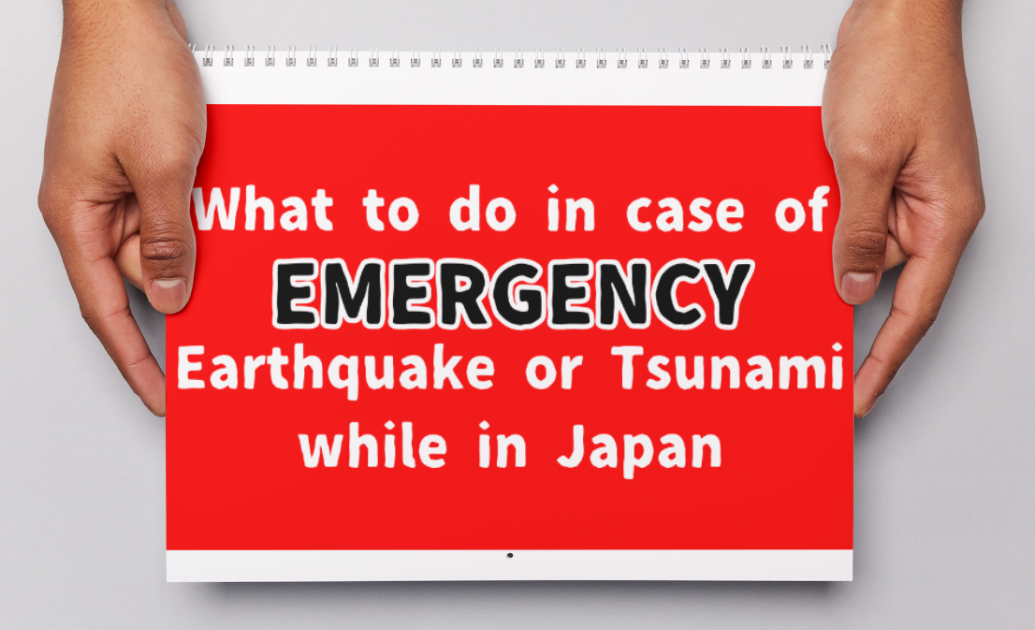Japan is a beautiful country, but it is also disaster-prone. Earthquakes, tsunamis, volcanic activity, typhoons, and heavy snowfalls are all part of life in Japan.
For travelers, the thought of facing a disaster in a foreign country — where the language and customs are unfamiliar — can be frightening. Even though Japanese people are generally well-prepared and calm during emergencies, confusion can still occur.
That’s why it’s important to know what to do and where to get reliable information before a disaster strikes. Here’s a guide to help you stay safe and informed while in Japan.
Where to Get Information
🗺️ Disaster Information
You can check real-time updates, hazard maps, and evacuation sites on the Tokyo Metropolitan Government Disaster Prevention Map:
👉 Tokyo Disaster Prevention Map (English)
🏛️ Embassies and Consulates
In case of a serious emergency, contact your country’s embassy or consulate in Japan.
👉 List of Foreign Embassies and Consulates in Japan
🚉 Train and Transportation Information
Train operations depend on each railway company. Always confirm the latest status before traveling.
👉 JR East Railway Information (English)
☎️ Disaster Emergency Message Dial (171)
During a major disaster, phone and Internet connections may be unavailable. You can leave a voice message for family or friends using NTT’s Disaster Emergency Message Dial service.
👉 NTT East Voice Message Service (English)
Evacuation Shelters
In the event of a major earthquake, go first to a temporary evacuation site such as a nearby park or school.
These locations are designated by the local government and serve as safe gathering areas.
👉 Tokyo Evacuation Site Guide (English PDF)
Earthquake Early Warning System
The Japan Meteorological Agency (JMA) issues Earthquake Early Warnings through TV, radio, and mobile phones.
This system provides a few seconds’ notice before strong tremors reach your area, giving you time to protect yourself.
👉 Japan Meteorological Agency (JMA)
How to Protect Yourself During an Earthquake
When You Are Indoors:
- Take cover under a sturdy table or desk.
- Stay away from furniture, windows, and glass that could shatter.
- Do not rush outside while the shaking continues.
When You Are Outdoors:
- Protect your head with your hands, bag, or jacket.
- Move away from buildings, signboards, and concrete walls that could collapse.
- Watch out for falling objects like glass or bricks.
👉 Tokyo Fire Department – Earthquake Safety Tips
What to Do If a Tsunami Hits
- Check Tsunami Hazard Maps and evacuation routes before visiting coastal areas.
- If you feel a strong or long earthquake near the coast, move immediately to higher ground — don’t wait for official warnings.
- Get updates from:
- J-Alert (national emergency alert system)
- Local radio and TV broadcasts
- Disaster-preparedness email services
- Lifesaving Association announcements
👉 Japan Lifesaving Association – Tsunami Safety
Disaster Prevention Measures in Japan
🏫 Evacuation Drills
Japanese schools and offices conduct regular disaster drills to prepare for earthquakes, fires, and tsunamis. These drills train people to react calmly and efficiently during emergencies — a habit that starts in childhood.
🏙️ Earthquake-Resistant Buildings
Most modern Japanese buildings are designed with seismic resistance, meaning they can withstand strong earthquakes without collapsing.
Many also feature vibration control and seismic isolation technologies that absorb or reduce ground shaking.
While no structure is completely immune, Japan’s strict building standards make it one of the safest countries in the world in terms of earthquake preparedness.
Final Thoughts
Disasters can happen anywhere, but being prepared makes all the difference.
Knowing where to go, what to do, and how to get accurate information can help you stay calm and protect yourself during an emergency in Japan.
Keep useful links and emergency numbers saved on your phone — and stay alert, but not afraid. Japan’s safety systems and local people are there to help you.

